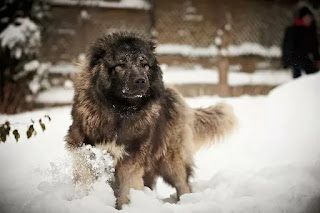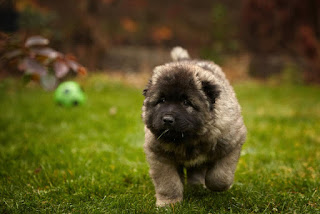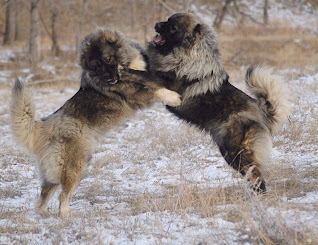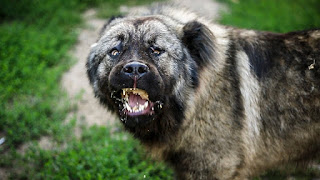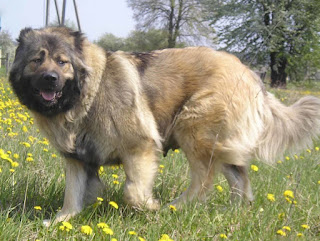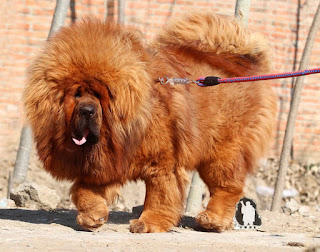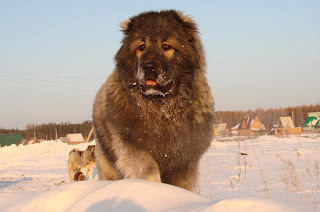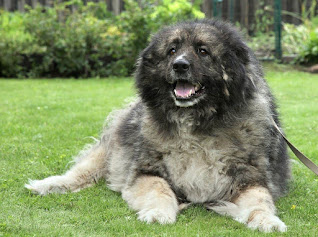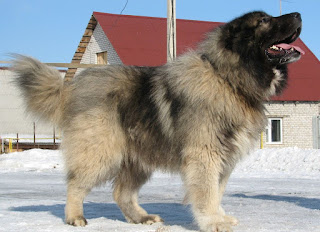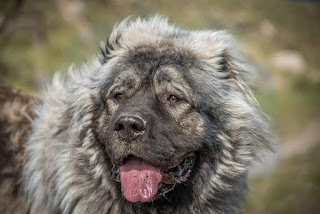Caucasian shepherd russian dog breeds large - The country of origin of the Caucasian is Russia. The image of this species is found on some coats of arms of Georgian princes.
Caucasian shepherd russian dog breeds large
Caucasian shepherd russian dog breeds large image
Caucasian shepherd russian dog breeds large best
Caucasian shepherd russian dog breeds large cool
Caucasian shepherd russian dog breeds large information
The modern description of the breed Caucasian Shepherd says that in Russia professional breeding is engaged in a large number of breeding nurseries.
If you want to buy yourself such a friend, you need to consider some points. For example, Caucasians perceive only the family members in which they live. They are quite unfriendly to all other people. The animal instantly reacts to any potential danger, so walking it, you always need to be alert. The characteristics of the breed Caucasian Shepherd emphasizes that the dog needs strict education under the guidance of a strong-willed owner.
It is worth not buying if you have never done anything with large dogs before, and if you can not visit the training grounds with the dog.
Representatives of this type are fully formed by the age of two, both physically and mentally. This fact should be taken into account, taking the course of classes with a cynologist. This species is perfectly trainingable and has excellent working qualities. In a fit of anger dog is almost impossible to contain, in these moments they become angrier than pit bulls and Staffords, which is very dangerous, given the size of the dog.
Caucasians belong to the category of giants. Weight varies between 45-50 kg in females, from 50 to 60 kg in males. The size of the Caucasian Shepherd dog in the withers: up to 70 cm in females, up to 74 cm in males. The average life expectancy of the Caucasian Shepherd dog is 15 years, often there are centenarians.
History of the origin of the Caucasian Shepherd Dog
There is no consensus on when and from what ancestors this subspecies was received. Most scholars have come to the conclusion that the closest relative of the Caucasian Shepherd dog is the Tibetan Mastiff or Tibetan Dog. Russia is considered to be the country of origin.
According to another version, the animals first appeared in the ancient state of Urartu, located in the Caucasus. Images were found that looked remotely reminiscent of these watchdogs.
Interesting facts:
The first chronicle mention of this breed dates back to 1121 BC, when the emperor of the zhou dynasty received a puppy as a gift;
in 1765, an official order was issued in Russia, which obliges the owners of Caucasians to involve them in the execution of the guard and security service;
in the 19th century, this species was used for search purposes, but the experiment could not be used, and the Caucasians were replaced by German and Eastern European Shepherds;
animals are often given intimidating nicknames, aided by their formidable appearance.
The establishment of the Caucasian watchman is a big responsibility, as the dog with the wrong upbringing can be aggressive and dangerous.
The appearance of the Caucasian Shepherd Dog
Shared impressions
In addition to the single standard described by the Russian Cynological Federation, there are several subtypes that have small visual and behavioral differences:
Georgian - these dogs are stronger and more massive, the body length is a few centimeters longer than that of other species, the coat is long, one shade, most often - zonal-gray;
Armenian are the smallest individuals
mountainous Azerbaijani and steppe Azerbaijani;
Dagestan - resembles Georgian, but has the color of a bicolor or tricolor.
The first standard was registered in 1931. It was based on the Georgian type of animals.
Interestingly, two years in a row, in 1970-1971, the title of World Champion at the International Exhibition was awarded to the Caucasians. In the photo of the Caucasian Shepherd can be seen that in front of you - a representative of a giant breed.
Head
The head with a square forehead is massive. The cheekbones are well developed, have clear outlines. The muzzle is large, blunt-shaped. A bulging forehead with a shallow groove. Lips are thick, tightly closed. The color of the nose lobe is black, brown is permissible for light colors. The ear shells are not large, cupped within a few days after birth. It is worth remembering that if you plan to visit foreign exhibitions with the dog, it is better not to buy ears, as under the new international rules this operation is prohibited. Eyes are deeply planted, dark in color, eyelids fit tightly to the eyeball. The bite is standard, scissor-shaped. The number of teeth is 42.
Neck
The neck of dogs of this breed is powerful, muscular, strong. The syg. Significantly shorter than the length of the skull bones. The angle relative to the dorsal line is 30-40 degrees. Let's say a small "suspension", but practice shows that such dogs rarely get prizes at exhibitions.
Torso
The breast is wide, low-lowered, rounded. The lowest point of the breast should be at the level of the dog's elbows. The belly is toasty. The withers protrude significantly over the back line, wide. The back is straight, smooth, grit slightly skewed. The muscles of the back are strong and wide. The loin is shortened in males, allowing a slight lengthening in the.
Fore limbs
Paws are powerful, the legs are strong, stable, short. When examining the front limbs, you can see that the paws are wide apart, straight, parallel to each other. The elbows are set back, and the deviation sideways is considered a violation of the standard.
Rear limbs
The hind limbs are parallel to each other. The jumping joints are a little straightened. When the dog is placed in the foot rack, they are placed under the jumping joint, forming a 90-degree angle. Pulling back paws is not acceptable.
Tail
The tail is highly planted, has the shape of a sickle or ring, relaxed in a calm state. The tip of the tail reaches the hock joint.
Movement
Movements are not constrained, slow main allures - a step or a wide slow lynx. In active movements, we allow a cargo gallop without signs of instability. The front paws on the run do not cross the middle line. The top points of grit and withers should be on the same level. During active movements, the dog does not rake the soil with its paws and does not deviate from the direct trajectory of movement. Elbow joints do not turn outwards when moving. Paws should spring slightly at the jolt.
Wool
The wool cover of this breed is thick, the wool is stuffed. This is due to the fact that the Caucasian Shepherd Dog at one time adapted to the climatic conditions of the mountainous regions of the Caucasus. Three-layer wool:
The top layer retains moisture outside;
cool layer,
undercoat keeps heat under wool
Based on which of the three layers prevails, the short-haired type, long-haired type and intermediate are allocated.
Color
Acceptable colors of the Caucasian Shepherd according to the standard of the breed FCI: any solid monochrome color, any spotted color. It is unacceptable if the Caucasian Shepherd has an evenly black color, brick-brown, genetically blue, unexpressed black. The most common colors are red, gray, tiger and white. The dog's eyelids and lips should have a bright black solid contour.
Size
The height of the Caucasian Shepherd in the withers should be at least 68 cm and not exceed 75 cm in males. Optimal height - 70-72 cm. Bitch should be not less than 64 cm, but not exceed the limit of 70 cm. The weight of the Caucasian Shepherd Dog should not fall below 50 kg, sheepdog-bitch - below 45 kg.
Any deviation from the official standard of the breed can reduce the exhibition score. Disqualifying vices do not give the dog the right to participate in all-Russian and foreign exhibitions.
The character of the Caucasian Shepherd Dog
Who is the Caucasian Shepherd Dog? The breed has a very difficult character. That is why it is not recommended to have people who have no experience with large breeds. Caucasian Shepherds are distinguished by perseverance, stubbornness, fearlessness.
Dogs have excellent watchmen. Unpretentious in maintenance, prefer apartment maintenance or housing indoors in the open air. In winter, the street does not freeze thanks to the thick undercoat.
To children the breed treats well enough, but does not show active interest and sympathy. But if there is a child in the family where the Caucasian lives, perhaps he will become the number one for the dog. These dogs are one-love by nature and recognize only one owner, perceiving the rest of the family for their flock.
What is the difference between the character of the Caucasian Shepherd in years from the behavior of a puppy? Toddlers are more willing to come into contact and are more attached to the person, as the dog grows up showing more independence and isolation.
The Caucasian Shepherd Dog treats other pets well. The main condition - another dog should belong to the category of small or medium breeds. Over any large dog Caucasian will dominate in every way, which can lead to fights and serious injuries to both. If you have such a dog, be prepared to walk with it away from the places of crowds of dogs.
This breed must be socialized. It is recommended to start training and training up to six months. The optimal time is the beginning of walks, after the quarantine after the third vaccination is over. Since this breed is quite stubborn, self-sufficient and independent, the training of an adult dog will be quite a difficult process.
Physical punishment instantly causes attacks of aggression in this breed.
At home, the dog behaves calmly, special activity is not different. To strangers in the house with the owner the dog is friendly enough, although he is wary. Dogs are noticeably isolated and do not require constant attention, but at the same time incredibly devoted to members of their family.
Parenting and training
Incredible groundless aggression, which is often attributed to this breed - a myth. It can only occur as a result of improper upbringing or treatment of an animal. Control of the dog's behavior begins a few days after the baby arrived at the new home. Exercise training is done calmly and methodically, with reusable daily repetitions.
By the end of the first year of life, the dog must understand and be able to perform a number of commands:
"impossible/fu" - the team provides not only the safety of passers-by, but also the pet itself, for example, in a situation when she decided to eat something from the ground or she tries to be treated by a stranger on a walk; Caucasian shepherd russian dog breeds large.
"sit/lie" - the first commands to which the puppy is trained;
"Next" is another security team
"teeth" - if you plan an exhibition career, this team is one of the first to learn;
"in place" - usually such a command is used to send the dog in its place in case of a fault;
"to me" - in any situation the animal should hear it and instantly perform it.
The training of a new family member to the toilet also begins as early as possible. Regardless of the season - winter, spring, summer or autumn - the owner must take the baby for a walk every day at a certain time.
If the puppy shows interest in shoes and gnaws furniture, it is necessary strictly, but quietly forbid him to do physical punishments are unacceptable.
It is recommended to go with the dog OKD - a general training course, where competent dog handlers will tell dog owners how to educate Caucasians and how to find an approach to the dog taking into account its breed. It is worth remembering that giants and molosses are considered "late breeds", that is, the complete formation of the dog ends by the age of two, and before that it is a teenager.
This breed is not suitable for various activities, such as agility (passing the track with obstacles), freestyle (dancing man with a dog), frisbee (ball-toting, plate or puller).
Many large breeds, by virtue of their size, once in a while try to test their owner. Any attempt at domination or aggression must be stopped calmly and methodically. A well-mannered dog will never offend family members.
In addition to the OCD, you can take a training course with the dog. In any case, it is desirable that the education and training of the Caucasian Shepherd was under the control of a trainer.
The health and diseases of the Caucasian Shepherd Dog
Possible diseases
In order to make your pet as sick as possible, it is necessary to carefully monitor his health and regularly perform hygiene procedures.
The maximum harm to the health of Caucasian sheepdogs can cause infectious diseases, which dogs endure quite hard. In addition, the breed is prone to damage to some systems and organs, as a result of which may develop:
Metabolic disorders;
Bone-muscle disease;
disruption of the central nervous system.
The most dangerous infectious diseases are plague, rabies, leptospirosis, non-specific tuberculosis. You can suspect them if the dog is diagnosed with the following symptoms:
heat, the temperature is kept at 40 degrees, the nose is dry and hot;
drowsiness, apathy, complete lack of physical and emotional activity;
On the walk the dog does not want to go anywhere, the tail is lowered down;
The animal often asks for a toilet, abundant frequent vomiting;
Convulsions;
abundant discharge from the nose and eyes;
the wool is dull, does not shine.
Vaccinations are the prevention of many infectious diseases. Without them, it is simply dangerous to take the animal out on the street.
Among diseases associated with metabolic disorders, Caucasian Shepherds are characterized by obesity, cryptorchism, gigantism of the fetus in utero development, dwarfism. Treatment of obesity is carried out with the help of selecting a special diet, other diseases - hormonal therapy.
Disorders in the development of the bone-muscle apparatus can be attributed to hip dysplasia (the scourge of modern dog breeding), weak puffs, kosolapi, congenital lameness, mainly on the hind legs.
Epileptic seizures, muscle cramps, neuroses and behavioral disorders are common in dogs with congenital or acquired CNS diseases.
Food allergies in this breed are not common, but it is worth apprehension to treat new foods in the diet and chicken meat. If you notice combs on the dog's skin after changes in nutrition, it is recommended to return to the usual feeding pattern. In severe cases, allergic swelling of the snout and larynx may develop.
Reproductive health
Dogs that have reached one year of breeding are allowed to breed. The car's leak goes through twice a year. Its duration is on average 24-28 days. In this cycle, mating is carried out on the 11th-13th day. The males can be used for breeding no more than 8 times a year.
If there is a healthy pregnancy, the duration of which is 56-66 days, the birth is easy and without complications. Bitch copes on her own, to resort to the help of a veterinarian does not have to. There are usually 4-8 puppies in the litter. Caucasian Shepherds have an excellent maternal instinct that guarantees the health and safety of offspring. In the case of the birth of weak puppies is recommended to feed with special nutrient mixtures.
If the dog is fully healthy, sterilization is not recommended. In the presence of medical indications (peometer, cancer, frequent false pregnancies, mastopathy) surgery is performed no earlier than a month after the end of the leak or the termination of feeding puppies.
Feeding and dieting features
Compared to other large breeds, Caucasian Shepherds eat relatively small amounts of food. For 1 kilogram of weight of the animal accounts for 30-35 grams of natural feed or 10-15 grams of dry food per day, which is much less than the usual norm for giant breeds. Accelerated metabolism ensures that all nutrients and vitamins are produced from food. Caucasian Shepherds are among the few breeds that are able to absorb cow's milk.
What to feed the dog - dry food or natural food? Based on the fact that the dog is a predator, preference should be given to natural feeding. In the diet must be present low-fat varieties of muscle meat, by-products (liver, kidneys, heart), fish. To improve digestion and fermentation in the dog's diet must be present scar, which can be replaced by one full-fledged feeding.
Fruits and vegetables can be given any, based on the taste preferences of the Shepherd. If you want to raise a dog on the "drying", then the question, what kind of food to feed the puppy, you will give the answer breeder. He will tell what kind of food is best for this breed, how many times to feed a monthly puppy, how the diet changes with the age of the dog and whether it is possible to give fermented milk.
To prevent the formation of tartar can be given to the dog as nibbles large bones, which it will not be able to swallow. For example, the knee joint of a cow, a beef tail. If the dog lacks some elements, you can give vitamin complexes prescribed by the veterinarian.
Care and maintenance
For Caucasian sheepdogs it is preferable to keep in an aviary with a booth. The bottom of the booth should be lined with hay or straw to keep warm. If the animal is kept in the apartment, its sunbed should be at the place where the view of the entrance doors opens, otherwise the dog will feel discomfort.
Regular care includes combing, haircuting of the claws, rubbing the area around the eyes.
Caucasian Shepherds are owners of thick wool. In order that it does not stray into tangles, it is necessary to comb it regularly. For long-haired representatives, especially during molting, it is better to use a furminator. Frequent washing is not recommended. It is necessary to bathe the dog as it is contaminated. Exhibition dogs are subjected to procedures of haircuts and grooming. The claws should be trimmed with claws at least once a month.
In the warm season, many representatives of this breed carry the ear mite. Therefore, every day it is necessary to carefully examine the ears for increased secretion of ear sulfur. If the dog is constantly scratching his ears and rolling his head on the ground or floor, and in the ears there are dark yellow discharges in large volume - it is necessary to consult a veterinarian.
Many owners are concerned about how to care for the pet's teeth. For prevention, you can use special products in the form of treats or special drops, which should be added to a bowl of water daily to cleanse the mouth of plaque and unpleasant odor.
Caucasian Shepherd dog is one of the breeds that buy ears within a few days after birth. Usually the operation is carried out on the fifth day. Special care after the procedure of ear cartilage does not require, but it is necessary to look after the baby or litter, so that there is no injury. If you plan to visit foreign exhibitions with the dog and wait for a puppy from a certain litter, it is worth discussing in advance the issue of cupping with the owner of the, as the withdrawal of purchased animals in the ring since 2013 in some countries is prohibited.
The general rules of care and maintenance of the Caucasian Shepherd dog are not much different from the regulations for other large breeds of dogs. The main thing is to carry out hygiene procedures in a timely manner and give space to movements.
Tips for choosing a puppy
Before you buy a puppy, determine the goal with which you start it. If you just want a big furry friend in the family, choose a, especially if you have children. are easier and faster to learn, they are more open and cheerful, can become a good companion for the child.
If you want your dog to become an excellent guard, it is worth buying a dog. It should be taken into account that they periodically check the master's authority through disobedience and attempts at domination.
Many potential owners are concerned about how to choose a thoroughbred representative of the breed. Purchase a puppy you need in a breeding kennel with a full package of documents - it's a puppy card, which is then exchanged for pedigree in the Russian Cynological Federation, a veterinary passport with marks about vaccinations. Some breeders fill out the sales contract.
Purchasing a dog from a professional breeder, you get a guarantee that the animal is a thoroughbred representative of this breed, and therefore, fully meets the standards. At the moment, many conscientious owners do their dogs tests for dysplasia, and if there are any parents of litter in which you choose a dog, you will be sure to show them.
When you meet your baby, watch how he behaves. Puppies of the Caucasian Shepherd should be cheerful, active, play with single-broomers, touch them, growl and bite. The kid should actively make contact with new people, he should not run away and hide.
At visual inspection there should be no umbilical and groin hernias, bite in the norm scissor-shaped, dental formula 6 x6.
Before buying a baby you need the advice of an experienced specialist in the field of this breed, who will tell in detail what points you need to pay attention to. Do not focus on the cost - the high price of a dog does not give guarantees of full compliance with the standard.
How much does a Caucasian Shepherd
How much the Caucasian Shepherd puppy costs, it is definitely difficult to say. The amount can start in a few thousand and end in infinity. The price of the Caucasian Shepherd Dog consists of several factors:
Ancestry
Sex - are usually more expensive;
having titles with both parents;
The cost increases dramatically if one of the parents is imported or has imported blood;
rare colors are valued higher.
The average cost of a kennel dog is 25 thousand rubles for a dog and 35 thousand rubles for a. Kennels sell puppies more expensive than ordinary owners, making litter through the RCF.
Buying an undocumented dog is not recommended. Puppy card is a guarantee that a year after purchase in your house will live Caucasian Shepherd, and not mestizo of unknown origin. It is always worth remembering that dogs, resulting from the mixing of two different breeds, very often have a weak psyche or excessively aggressive even to members of their family, Caucasian shepherd russian dog breeds large. Often unscrupulous sellers guarantee the pureness of parents in the absence of documents, but in reality it is not.
